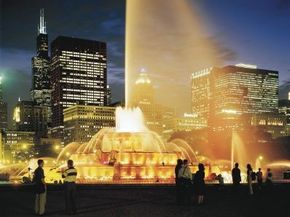This 2,400-mile (3,862 kilometer) stretch of Americana, dubbed "the mother road" by writer John Steinbeck, is dotted with iconic saloons, motels and kitschy pit stops. In its heyday, Route 66 opened up a path to the Pacific for a nation of folks who must have felt landlocked. And businesses along its sidewalks flourished with tourism.
In the early 1920s, highway fever struck the United States. Enough citizens owned vehicles to warrant the construction of federal interstates, and when the national highway system was in its infancy, Oklahoma highway commissioner Cyrus Stevens Avery had a vision -- a superhighway linking Chicago and Los Angeles by way of small, rural towns. His dream-road, Route 66, opened in 1927 and was marketed as "The Main Street of America." The highway, paved in 1938, provided a scenic path across the nation -- it rolled through the Illinois prairies, the Ozarks, the foothills of the Rocky Mountains and the Grand Canyon and ended at Santa Monica Boulevard and Ocean Avenue in Santa Monica, Calif.
Advertisement
Though modern interstate highways have overshadowed Route 66 in recent decades and the road was formally decommissioned in 1985, it still attracts travelers thirsty for a swig of aged America. What vintage spots on Route 66 are worth a look-see? Let's find out.
